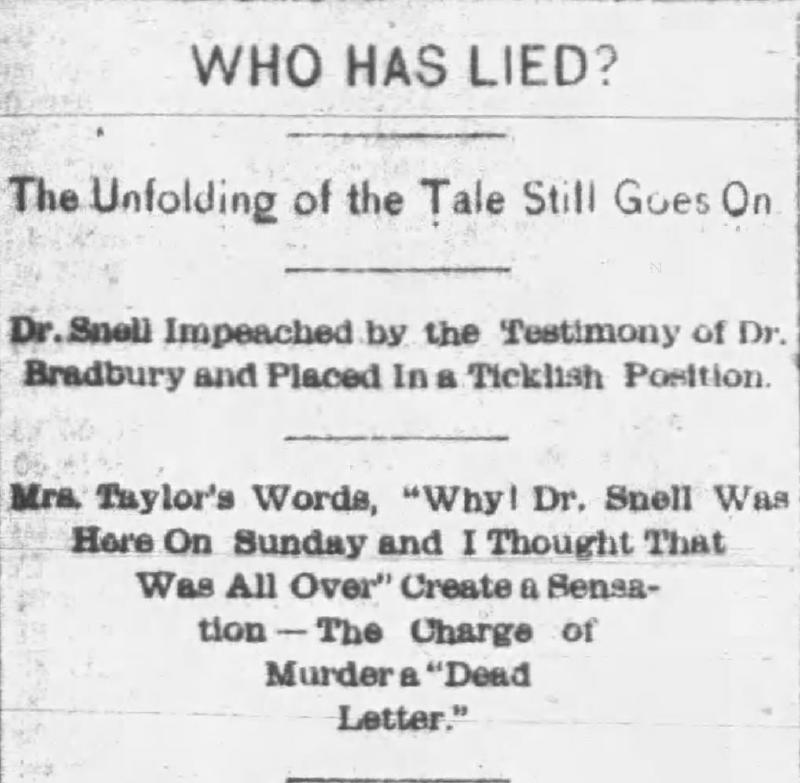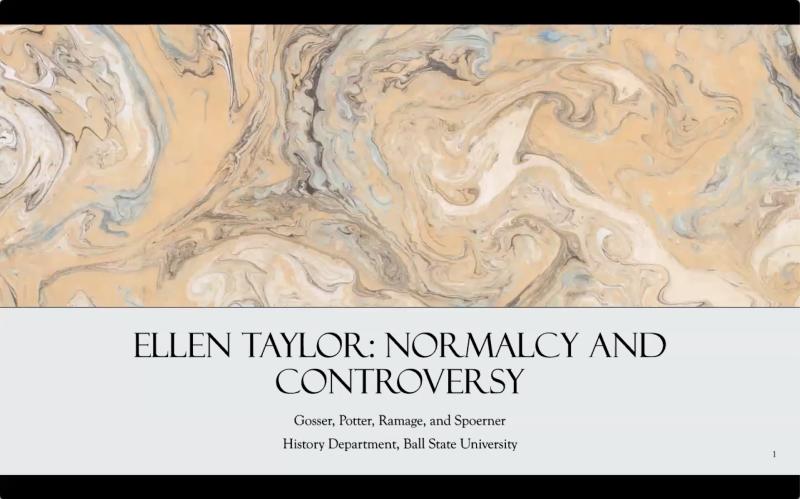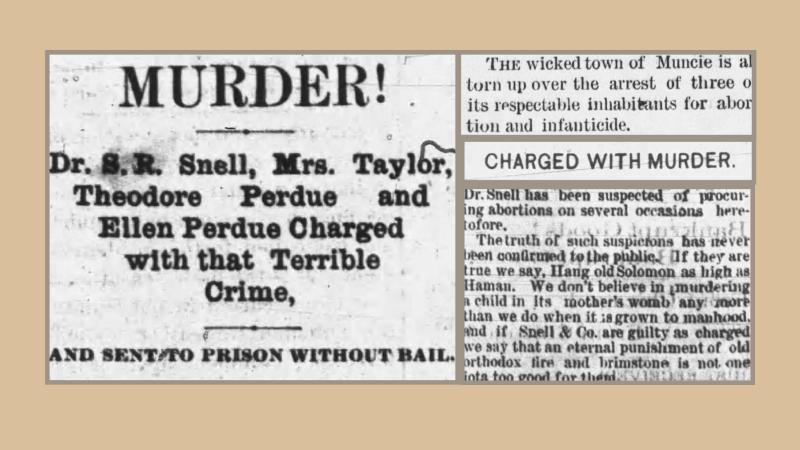Ellen Taylor
Researching medical practice or patient experiences can be challenging. Newspapers are a central source for historians of the Gilded Age and Progressive Eras, but they print information about medical scandals, innovative research, membership lists and drug advertisements. Information about daily practice or individual care is challenging to access, as the Julia Coleman video discusses. When Dr. Anna Lemon Griffin's husband accused her of having a morphine addiction, newspapers took notice. Finding information about her patients and practice was more more difficult.
Ellen Taylor's biography faces the same challenge. In 1881, Ellen, her mother Cynthia, her lover Theodore Perdieu, and her physician Dr. Solomon Snell were arrested in relation to an alleged abortion. Uncovering the truth in this situation -- of who did what and why -- seems impossible. The loudest voice in this case was not the Law or accused parties, but the newspapers.
This biography video was researched and created by Graye Gosser, Jenna Potter, Barry Ramage, and Kaitlyn Spoerner.
As the headlines below show, the old editor's saying "if it bleeds, it leads" was true in the 1880s. Indiana newspapers mixed news, moralizing, and scandal in order to sell copies. The news of the Taylor fetus' discovery spread quickly across the state. Newspapers in Richmond, Fort Wayne, and Noblesville all covered the trials.

Above: "Who Has Lied?" The Muncie Daily Times (May 24, 1881).

Above: "Abortion and Muder," Muncie Daily Times (May 23, 1881).

Above: The Muncie Daily Times (May 26, 1881).

Above: The Muncie Daily Times (May 24, 1881).
An early account of the events reveals the difficulties of this case and how press coverage highlighted the moral aspect. The headline (left) appeared only a week after the fetus' discovery. Its accusatory tone is clear and it invites readers to speculate.
Based on preliminary testimony presented before the county coroner, this article recaps the events that took place in the Taylor household. Ellen gave birth to the fetus early. She was visited by Dr. Snell once or twice, and also Dr. Bradbury. Ellen may have taken an abortifacient. The article notes where testimony by Ellen, her mother Cynthia, and the doctors conflict and assumes that someone is lying.
Dr. Snell and Cynthia Taylor receive most of the blame. It appears that the doctor had a reputation for aiding pregnant women. Problematically, Muncie's newspapers printed a lot of rumor and little evidence on this topic. The newspapers also portray Mrs. Taylor as an accessory to abortion. One article (left) reports that Ellen's younger brother told a friend that his mother choked the infant herself.
Early on, the newspapers seem to defend Ellen and Theodore. An article (left) notes that they had good reputations. From a modern perspective this reputational judgement may seem out of place in an investigation of what happened. Ellen told reporters that she had not been pregnant. Only a day before the newspaper was making a joke about Ellen's belief that she had been ill with cholera, a bacterial infection that killed thousands in the nineteenth century. Clearly the newspaper believed this to be a cover-up.
Perhaps more important, but harder to see, is the impact of Ellen's economic situation. She was eighteen years old and unmarried when she allegedly gave birth. In 1880 she was not recorded as living with her parents, although the doctors visited her at their house on Franklin Street. Ellen's father was a book-keeper at the sawmill, but the family does not appear well off. Ellen's mother stated with surprise that she hoped the pregnancy was in the past and told Dr. Bradbury that there was no one to care for Ellen and a child, either in their home or elsewhere. Dr. Snell's account of visiting Ellen concurs and he noted that he saw no one caring for the recently-delivered infant.
Around June 1, 1881, Ellen and Theodore married. Often marriage was (and still is) considered a solution to an unexpected pregnancy. While the marriage might have persuaded people in Muncie that the couple was moral and should not be punished, it seems like a late solution. The belief that marriage solved a woman's reputational and financial woes ignored the central problem. In 1881, someone had to care for Ellen and an infant. There was no expectation that she could do it herself.
This methodology video was created by Graye Gosser, Jenna Potter, Barry Ramage, and Kaitlyn Spoerner.
As a young woman, Ellen Taylor had a difficult and unusual experience. Click "Conclusion" below to see how all of these women's lives, though different, work together to form a microcosm of Muncie society.


